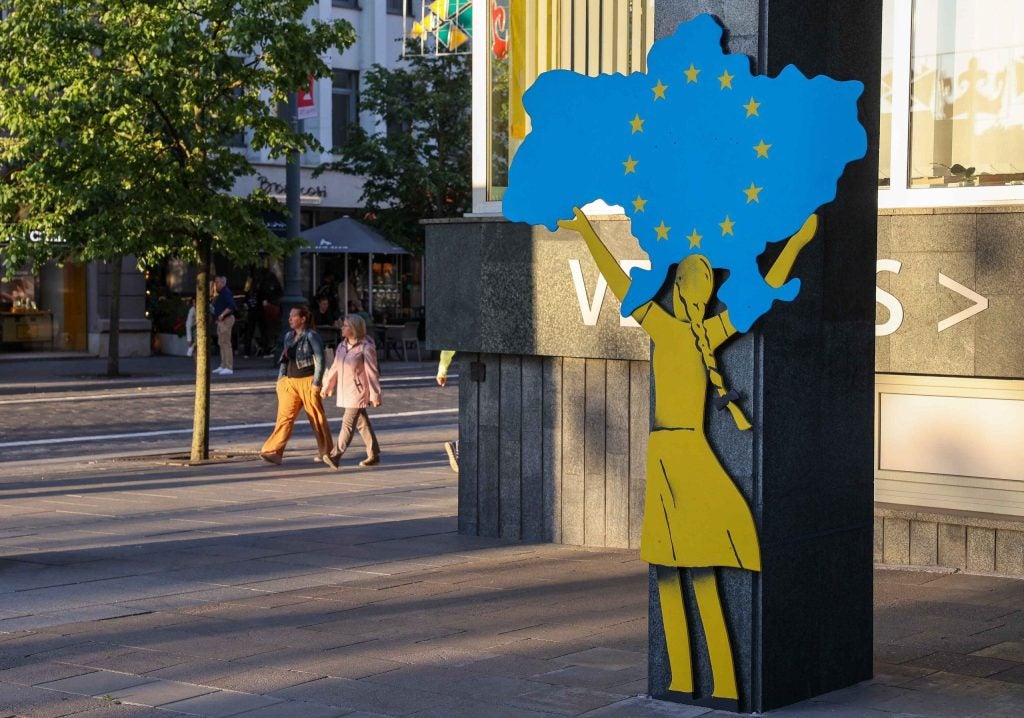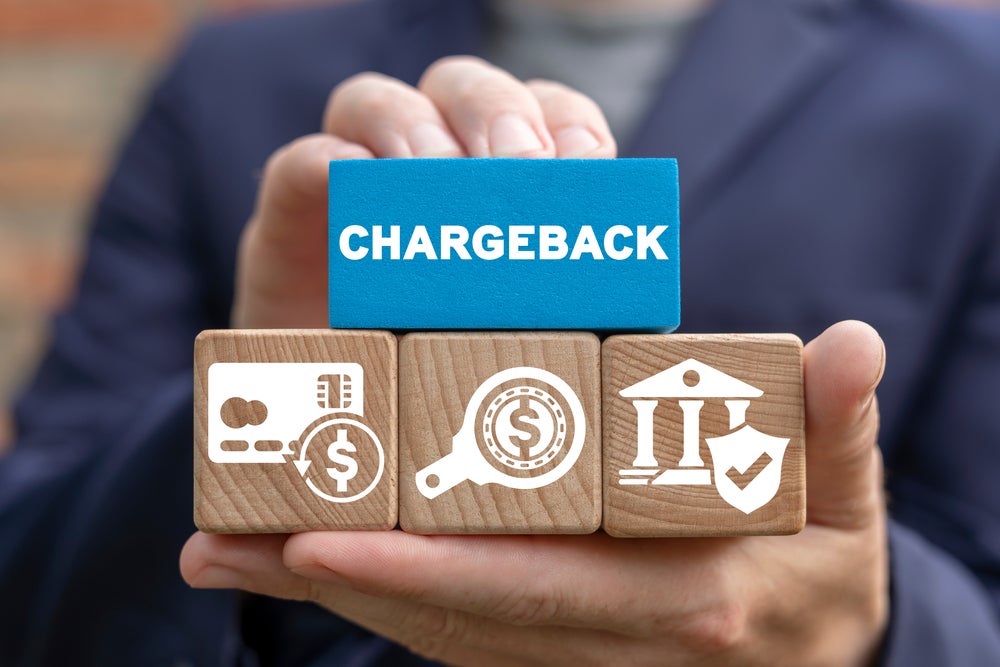Venezuela’s credit card market has
been held back, constrained by government regulations as well as
economic and political uncertainty. Robin Arnfield
reports
Despite Venezuela’s vast oil and gas
resources, 27% of Venezuela’s estimated 28 million population live
under the poverty line, according to the CIA World Fact Book. The
country’s GDP rose by an estimated 4% in 2011, while inflation was
running at an estimated 27.2% in 2011, BBVA Research says.
Pedro El Khaouli, senior director, Latin
America Financial Institutions at Fitch Ratings, says that the
economic outlook for 2013 is very uncertain, regardless of whether
President Hugo Chávez wins the October 2012 presidential
election. “There is no certainty in Venezuela,” agrees John
Howley, senior director, international, at US-based cards analytics
firm FICO.
“We are seeing a high level of government
spending in 2012, because of the election, to give the impression
that the economy is strong,” El Khaouli says. “But, although there
will be economic growth in 2012, the banks will remain cautious. We
won’t see aggressive expansion of the credit card market in
2012.”
How well do you really know your competitors?
Access the most comprehensive Company Profiles on the market, powered by GlobalData. Save hours of research. Gain competitive edge.

Thank you!
Your download email will arrive shortly
Not ready to buy yet? Download a free sample
We are confident about the unique quality of our Company Profiles. However, we want you to make the most beneficial decision for your business, so we offer a free sample that you can download by submitting the below form
By GlobalDataRegulation
“The level of government involvement in the
Venezuelan financial services industry is very high, as, due to
bank nationalisations, the government owns over 25% of the banking
sector,” says Nicolás Franco Gutiérrez, marketing director at
Colombian payments software vendor Ptesa.
In July 2009, the government acquired Banco de
Venezuela (BdeV), the country’s fourth largest bank, from Spain’s
Santander for $1.05 billion. Santander had originally wanted to
sell BdeV to a private buyer, but President Chávez announced in
2008 that he would nationalise the bank. Other government-owned
banks include Banco Industrial, Banco Bicentenario and Banco del
Tesoro.
“The government defines which credit lines can
be created by financial institutions, including the specific
amounts and interest rates for each category,” says Franco
Gutiérrez. “Only around 20% of total bank lending can be allocated
to car loans and consumer purchases.”
“The government has made it a priority to
promote lending to the agricultural sector to reduce Venezuela’s
dependence on imported food,” says Euromonitor International
research analyst Marco Salazar. “This has negatively impacted
lending in other sectors.”
The Venezuelan credit card market is tightly
controlled by government regulations. “Credit card interest rates
are capped by the regulator at 29%,” says El Khaouli. “Most banks
are tied to this maximum credit card interest rate, which is much
lower than in other Latin American countries.”
“Credit card lending accounts for 13 percent
of total gross consumer and commercial loans in Venezuela, and has
been at this level since 2007,” says El Khaouli. “Although
Venezuela’s real GDP is estimated to grow by 3.3% in 2012, we don’t
expect credit cards’ percentage of total gross loans to increase in
2012. Because they are cautious, the banks don’t want to
aggressively grow their credit card portfolios. They don’t want
credit cards to account for over 15% of total gross loans.”
“It’s hard to make forecasts about the
Venezuelan credit card market due to the upcoming presidential
election,” says Salazar. “Whether or not Chávez is re-elected will
have a major effect on the government’s attitude to relaxing
controls on consumer credit.”
Foreign exchange
“A government agency called CADIVI (Comisión
de Administración de Divisas/Currency Administration Commission)
imposes very strict regulations on access to foreign currency by
Venezuelans,” says Franco Gutiérrez. “CADIVI sets a fixed exchange
rate and a maximum amount of foreign currency for consumers and
businesses. This has a very significant effect on payment card
usage, as Venezuelans aren’t allowed to use debit cards abroad if
their account was created in Venezuela. Also, there are strict
limits on the amount that can be spent on credit cards outside
Venezuela.”
“CADIVI’s controls, by making it hard to use
credit cards outside Venezuela, help to limit foreign fraud
involving Venezuelan credit cards,” says Dimas Gomez, Gemalto’s
field marketing manager, secure transactions, Latin America. “To
use your credit card abroad, you have to tell CADIVI where you are
going, and when. There is an annual limit of $2,500 for
cross-border point-of-sale credit card shopping, which includes ATM
withdrawals from credit cards. For foreign internet shopping, the
annual limit is $400 a year.”
“The only way Venezuelans can acquire US
dollars is via credit card,” says El Khaouli. “But you can only
have a credit card if you are solvent, so people take good care not
to lose their card because of getting into debt.”
Bancarisation
“Banking penetration has been increasing
steadily,” says Franco Gutiérrez. “In 2010, the Venezuelan banking
regulator Sudeban (Superintendencia de las Instituciones del Sector
Bancario/Superintendency of Banks) said that 45% of Venezuelans
were using financial services products. Most of the population is
concentrated in large cities, which has helped to expand
bancarisation.”
Another factor responsible for banking growth
is the government’s move to distribute social welfare subsidies
known as the Bolivarian Missions through the banking system,
instead of through cash disbursements, says Franco Gutiérrez.
“The government uses debit cards to pay social
benefits to Venezuelans,” says Anabel Perez, CEO of Latin American
prepaid card programme manager NovoPayment.
Based on Sudeban figures, CI estimates that in
2011 there were around 19.3 million debit cards in issue in
Venezuela.
“Debit cards have been increasing in
Venezuela, but debit growth isn’t as explosive as in the US and in
other Latin American countries,” says Andreas Suma, FICO’s senior
director for Latin America.
“In these other markets, debit growth
has outstripped credit card growth. The lack of debit growth in
Venezuela is tied to the fact that there is a lack of bank accounts
in the country.”
ATMs
According to the Central Bank, Banco Central
de Venezuela, there were 8,869 ATMs in Venezuela in February 2011.
UK-based consultancy Retail Banking Research forecasts that the
total number of ATMs in Venezuela will rise to 12,000 by the end of
2016.
“There are two shared ATM networks, Suiche 7B
and Conexus, in Venezuela,” says Gustavo Alesso, general manager
payment solutions, Latin America and Caribbean, at US-based
processor FIS.
“The members of Suiche 7B include BdeV,
which had 1,100 ATMs of its own in 2011, Banco Industrial, Banco
Guayana, Banco del Tesoro, Banco Occidental de Descuento, and
Banesco.”
“The members of Conexus are Banesco, Corp
Banca, Mercantil, BFC Banco Fondo Comun, Citibank, BanPlus, 100%
Banco, and Mi Banco,” says Alesso.
“Conexus and Suiche 7B are interconnected,
which means Venezuelans can use their cards at any Venezuelan
ATM.”
EMV migration
“A law was created in 2009 making EMV
migration mandatory for Venezuelan issuers and acquirers, with a
deadline of 31 December 2011,” says Franco Gutiérrez. “But, as many
publicly-owned banks weren´t ready, the deadline was extended until
the end of 2012.”
“Venezuela was one of the first countries in
Latin America to begin migrating to EMV, because of the high level
of domestic card fraud,” says Alesso.
An article by Venezuelan government news
agency VTV on the Noticiero Veneversion website quotes Edgar
Hernández Berhens, Sudeban’s superintendent of banking
institutions, as saying that, by March 2012, 90% of Venezuela
credit and debit cards had been migrated to EMV. Berhens predicted
that, by June 2012, 100% of payment cards in issue would be
EMV-compliant. He added that card fraud had fallen by 80% in
Venezuela due to EMV rollout.
Gomez says that, as at March 2012, around 80%
of ATMs and EFTPoS terminals had been upgraded to EMV. “Some
acquirers say that they are getting close to the 100% mark for
migrating their terminals to EMV,” he says.
“I estimate that in six to 12 months’ time,
Venezuela will have fully migrated to EMV,” José Ramil, MasterCard
Venezuela’s president and general manager, told CI in March
2012.
In November 2011, BdeV went live with an
open-system ATM switch supplied by FIS, replacing a legacy switch
running on a mainframe. “One of the reasons that BdeV installed our
ATM switch was for EMV compliance,” says Alesso. “The Venezuelan
government mandated that all ATMs had to be EMV-compliant by end of
2011 or, if there was fraud, the ATM owner would be liable.”
Contactless cards
“As the banks have been busy completing their
rollout of EMV, which has been a major financial investment for
them, they haven’t been focusing on contactless cards,” Gomez says.
“There may be a few pilots of open-loop contactless cards in 2012.
But I don’t expect to see Venezuelan issuers rolling out
contactless cards in volume in 2012-2013. Similarly, we won’t see a
significant rollout of near-field communications (NFC) mobile
payments during this timeframe.”
Gomez notes that, while banks are holding back
from contactless technology, several transit schemes, including
Metro de Caracas and a train service, issue closed-loop contactless
prepaid cards.
Acquiring
Unlike other Latin American countries,
Venezuela lacks an integrated point-of-sale acquiring system.
Retailers wanting to accept card payments need to have multiple POS
terminals from different acquirers. “In a store, you’ll find four
or five POS terminals from different banks,” says El Khaouli.
However, Venezuelans can use any debit or
credit card issued by any Venezuelan bank at these terminals.
Transactions are routed back to the issuer by the acquirer through
Visa and MasterCard’s gateways, says Gomez. American Express and
Diners Club operate separate payment terminal networks in
Venezuela.
“There’s a lot of competition between banks to
get their cardholders to use their own POS terminals rather than
another bank’s terminals,” says El Khaouli. “If the cardholder uses
their own issuer’s terminal, then the issuer doesn’t have to pay
fees to another terminal’s owner. The banks run promotions such as
offering free iPods to get their cardholders to use their
terminals.”
According to the Central Bank, in February
2011 credit cards could be used at 251,808 point-of-sale terminals
installed at 199,649 retail locations. In addition, there were
70,085 merchants who only accepted Corp Banca’s Amex cards. In
February 2011, debit cards could be used at 250,572 POS terminals
installed at 198,850 retail locations, the Central Bank said.
There are two acquiring networks, Consorcio
Credicard and Inversiones Platco, which act as acquirers for their
owner/member banks.
“In addition, Banesco operates its own POS
terminal network,” says Gomez. “Several other banks also run their
own terminal networks, but they are progressively switching to
Consorcio.”
Platco is owned by BBBVA Provincial and Banco
Mercantil, while Consorcio is owned by BdeV, Banco del Caribe
(Bancaribe, in which Canada’s Scotiabank has a 27% stake) and Corp
Banca. “Consorcio Credicard has 110,000 POS terminals which it
drives using an FIS switch,” says Alesso. In addition, Consorcio
acts as an issuer-processor for 30 small and mid-size banks in
Venezuela.
According to Hypercom, which won a contract to
supply encryption technology to Platco in April 2011, Platco had
46,000 merchant clients in 2011.
“In the case of terminals operating on the
Consorcio or Platco networks, usually the terminals are branded
with an individual bank’s name,” says Gomez.
“In some cases, Consorcio owns the POS
terminal, and, in other cases, the bank owns the terminal.”
El Khaouli doesn’t think Venezuela will get a
unified acquiring system where a retail checkout just has one
terminal that is used to take all cards. “Big banks with a very
high number of terminals earn more fees when customers use their
terminals,” he says. “So there’s no incentive for the banks to
abandon the current situation of multiple acquirers’ terminals in
stores, and migrate to a unified acquiring system.”
“We have no indication that the current
acquiring model will change in Venezuela,” says MasterCard’s
Ramil.
Credit cards
Most Venezuelan banks issue both MasterCard
and Visa credit cards. BdeV, Banesco and Corp Banca also issue Amex
cards, while Banco Mercantil issues Diners Club.
According to Sudeban, there were 8.3 million
credit cardholders in Venezuela in December 2011, who performed Bs
6.81 billion ($1.58 billion) worth of transactions in December
2011.
Euromonitor’s Salazar predicts the number of
credit cards in issue will grow by 6.7% in 2012 and 6.1% in 2013,
while debit cards in issue will grow by 11.5% in both 2012 and
2013. Credit card transaction volumes will grow by 4.5% in 2012 and
4.6% in 2013, while debit card transactions will increase by 19.4%
and 16.5% in the same period, he says.
Euromonitor says that Venezuelans are
increasingly using their credit cards for purchasing groceries and
other household items as well as paying for utility bills and
educational fees.
In 2010, the largest debit card issuer was
Banesco, according to Euromonitor, followed by BdeV, Banco
Mercantil, and BBVA Banco Provincial in fourth place. Both in terms
of cards in issue and receivables, Banesco was the largest credit
card issuer in December 2011, according to Sudeban, followed by
Mercantil, Provincial and BdeV.
“There is a very high concentration of credit
card issuance among the top four banks in Venezuela,” says FICO’s
Suma. “This is much more the case in Venezuela than in any other
Latin American country.”
“Historically, Venezuelan banks have served
middle-class and affluent consumers, but in recent years these two
segments haven’t been growing significantly,” says Suma.
“Also, as the economy contracted over the last
few years, middle-class and affluent consumers didn’t increase
their spending. The banks haven’t seen a reason to extend their
lending to lower-income consumer segments, due to a lack of credit
reference data for these segments. This means banks can’t evaluate
lower-income consumers’ creditworthiness and borrowing behaviour,
so they can make a credit decision.”
“The combination of political and economic
uncertainty, and lack of credit reference data impedes the banks
from expanding the credit card market,” says FICO’s Howley.
“We aren’t going to see growth in consumers
entering the middle class in Venezuela for some time,” says Fitch’s
El Khaouli. “But there are still opportunities for banks to issue
credit cards to their existing customers without taking the risk of
offering credit cards to low-income segments.
There are middle-class and upper-income
consumers who don’t have bank accounts or credit cards, or who have
car loans or savings accounts but not credit cards. But, once the
banks have exhausted their cross-selling opportunities with their
own customers, then they may start to target lower-income
segments.”
Store cards
Unlike Chile and Peru, store cards represent a
very small part of the Venezuelan cards market. “It’s much more
common to have co-branded credit cards in Venezuela that are issued
by local banks through partnerships with local retailers,” says
Salazar.
“Organisations issuing co-branded cards
include Locatel, a national pharmacy chain, DirecTV, Hospital de
Clinicas Caracas, and Amway as well as mall operators such as
Sambil and Tolon, and private clubs such as Club Santa Paula or
Playa Grande.
In August 2010, President Chávez launched the
“Cedula del Buen Vivir” (good living card) credit card. Issued by
BdeV and two other banks, Bicentenario and Banco del Tesoro, the
card is linked to a savings account.
It can only be used to purchase
essential items such as groceries and electrical goods in
government-owned stores such as Abastos Bicentenario, Mercal and
PDVAL, as well as to book holidays through the state-controlled
travel agency Venezolana de Turismo. “The purchases enjoy a
preferential low interest rate that starts at 15%,” says
Salazar.
Receivables
According to Sudeban, in February 2012 total
credit card receivables rose by 23.5% year-on-year to Bs 33.65
billion ($7.84 billion) from Bs 27.45 billion in February 2011.
Credit card receivables totalled Bs 33.48 billion in January
2012.
According to Franklin Santarelli, Fitch
Ratings’ managing director, Latin American financial institutions,
between 2007 and 2011 Venezuelan credit card receivables grew by
136%.
“In the last six years, inflation has
been running at 25-27% a year in Venezuela,” says El Khaouli. “So
this has affected the growth in credit card receivables. In real
terms, receivables growth has been 1% or 0%.”
In February 2012, the largest issuer in terms
of receivables was Banesco with Bs 8.94 billion, followed by
Mercantil with Bs 6.86 billion, Provincial with B2 6.21 billion,
BdeV with Bs 4.53 billion, Banco Occidental de Descuento with Bs
1.05 billion, and Banco Exterior with Bs 1.2 billion, Sudeban
says.
“Banesco, Mercantil, BdeV, and Provincial
together controlled 79% of the total credit card loan book in
Venezuela in December 2011,” says El Khaouli. “No other bank had
over 5% of total credit card receivables in that month.”
“Over the last two to three years,
non-performing loan ratios for credit cards have been very low in
Venezuela,” says El Khaouli. “At the biggest banks, such as Banesco
and Provincial, the 90-days past-due loan (PDL) ratio is 1%.
This is because the banks only offer credit
cards to middle-class and higher-income consumers, and because they
only cross-sell to their own customer base. There is no mass-market
issuance of credit cards, such as took place in Mexico in 2007-2008
with resultant heavy chargeoffs, and the banks don’t buy credit
card customers from other sources.”
El Khaouli says the large Venezuelan banks
have very good credit-scoring and risk management practices. “The
ratio of PDLs to total credit card receivables including chargeoffs
is 1%, while the ratio of PDLs to total receivables excluding
chargeoffs is between 3 and 6%,” he says.
“The banks charge off credit card loans after
180 days, which helps to keep the quality of their portfolios in
good condition.”
Despite a fixed ceiling on interest rates, and
government imposed restrictions on account fees, credit card
issuing is profitable for Venezuelan banks. “The combination of a
low cost of funds for credit card loan provisioning and low credit
card risk provides very attractive returns,” says El Khaouli.
MasterCard
MasterCard’s Maestro platform has the dominant
share of the Venezuelan debit card market, according to Gomez. “The
two debit brands in Venezuela are MasterCard Debit/Maestro, and
Visa Debit,” he says. “Local private-label debit cards are not very
common in Venezuela.”
“In Venezuela, MasterCard offers the full
range of MasterCard credit cards such as Standard, Gold, Platinum
and Black,” says MasterCard’s Ramil. “In addition to our debit
platforms, we also offer a variety of different prepaid card
products.”
“Our marketing strategy is to offer our
Venezuelan credit and debit cardholders access to unique
experiences and benefits that can only be obtained through
MasterCard,” Ramil says. “For example, we have a program called
“Patrocinan el Encuentro” (they sponsor the game). Examples of the
promotions offered through this program have included offering
cardholders who used their cards on certain dates the chance to
attend the Copa America 2011 final match or the Sony Ericsson Open
tournament (sponsored by MasterCard), and win prepaid cards during
the holiday season.”
Most of MasterCard Venezuela’s promotions
apply equally to Maestro and MasterCard debit and credit
cardholders, says Ramil.
“The exception to this is our longest-running
promotion, ‘Tu Suerte Esta en Camino’ (your luck is on the way),
which offers MasterCard credit cardholders the opportunity to win
great prizes,” he says. “In 2012, the prize was a new car.”
Ramil says that MasterCard Venezuela uses
social media to generate dialogue with consumers and to market its
products.
“We’ve begun integrating many promotions
through our local Facebook page ‘MasterCard Venezuela’ and our
newly-launched Twitter channel @MasterCardVe, as social media
offers an enormous opportunity to reach consumers.”
MasterCard sees a huge opportunity to
penetrate the Venezuelan market with its payment products.
“The level of bancarisation is still
relatively low, which provide us with the opportunity to develop
different credit, debit and prepaid card products to address the
needs in the market,” Ramil says.
“We think that the implementation of chip
technology in Venezuela will enable us to introduce new payment
options such as mobile payments, which has a high potential to help
us reach under-served segments. We’re currently analysing the
opportunity to offer mobile payments in Venezuela.”







